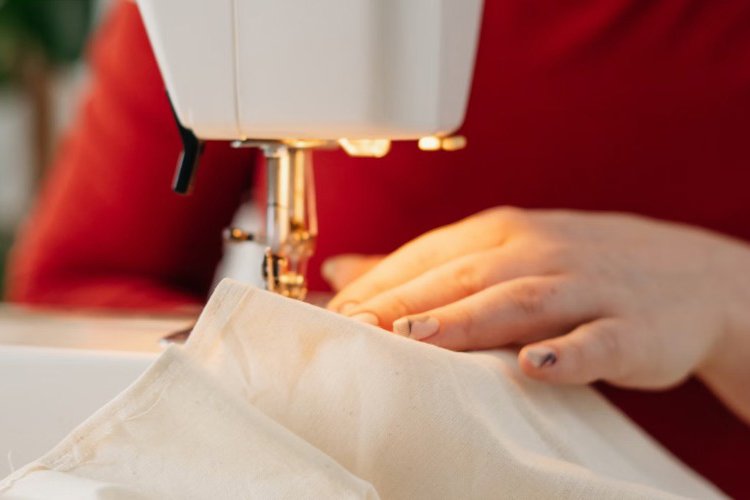
Fast fashion has become a popular trend in the clothing industry. This involves producing clothing at a rapid pace and at low cost, resulting in rapid style changes and a disposable attitude towards clothing. However, this has led to an increase in textile waste and environmental damage. In 2018, the United States alone generated 17 million tons of textile waste that ended up in landfills.
To combat this wasteful trend, self-repairing garments have emerged as a viable solution to extend the lifespan of clothing. Self-repairing garments not only reduce waste but also promote a sustainable lifestyle. In this article, we’ll look at some DIY clothing repair ideas that can help extend the life of your clothes.
One of the simplest and most common self-repair techniques is patchwork. This involves sewing a piece of fabric to a worn area of the garment. This technique is not only practical, but can also add a unique touch to the garment. Patches can be made from scrap fabric or purchased online. You can even use a decorative patch to add a pop of color to a plain garment.

Darning is another traditional repair technique in which holes or tears in a garment are repaired by sewing on a woven patch. This technique works well for knitted or woven garments such as sweaters or socks. Darning can be done by hand or with a sewing machine. If you’re not sure how to darn, there are plenty of tutorials online.
Embroidery is a versatile self-repair technique that can be used to cover holes or stains or simply add a decorative touch to a garment. Embroidery can be done by hand or machine and can be as simple or elaborate as you like. You can also use embroidery to create a design or add text to a garment.
Upcycling is all about transforming old or worn clothing into something new and exciting. For example, you can turn an old T-shirt into a tote bag or a pair of jeans into a pair of shorts. The possibilities are endless and upcycling is a great way to give new life to your old clothes.

Visible patching is a trendy repair technique that makes repairs to a garment visible. Instead of trying to hide the repair, visible repairs capture it and turn it into a decorative element. This technique can be done through embroidery, patchwork, or simply tracing the repair site with a fabric marker.
One of the most common problems with clothing is missing or broken buttons and zippers. Fortunately, these components can be easily replaced. If you have a sewing machine, you can replace buttons and zippers yourself. If not, you can take your garment to a tailor or dry cleaner for a quick repair.
Over time, clothing colors may fade due to exposure to sunlight and washing. To restore faded colors, you can try dyeing the garment with a fabric dye. There are various fabric dyes available in the market that can help restore the color of your garment. Follow the instructions carefully and choose a color that is suitable for the fabric of your garment.
Another common problem with clothing is ripped or frayed seams. This can be easily fixed with a needle and thread. For a decorative touch, you can use a matching thread color or a contrasting color. If the seam is too damaged, you may need to reinforce it with a patch.
Many items of clothing, especially women’s clothing, lack functional pockets. Adding pockets can not only add functionality to your garment but also give it a unique touch. You can find numerous instructions on the Internet for attaching pockets to clothing.

If you have a stain on your garment that cannot be removed or you want to add a design to a plain garment, fabric paint can be a good option. Fabric paint comes in a variety of colors and can be used to create designs and patterns or even to cover up stains.
Applique is a technique in which a fabric or pattern is sewn onto a garment to cover a hole or stain. You can use scraps of fabric or an old piece of clothing for the application. This technique can also be used to add a decorative touch to a plain garment.
If a garment has a frayed edge, you can cover it with braided trim. This technique involves braiding strips of fabric and sewing them to the edge of the garment. You can use contrasting or matching colors to create a decorative effect.
Reverse appliqué is a technique in which a pattern is cut out of a garment to reveal an underlying layer of fabric. This technique can be used to cover up a stain or add a unique design to a garment. Reverse applique can be done by hand or with a sewing machine.
Shibori is a Japanese dyeing technique that involves folding, twisting and tying fabrics to create unique patterns. This technique allows you to restore the color of a garment or add a new design. There are plenty of shibori tutorials available online, and you can use different colors of fabric to achieve different colors.
In addition to these techniques, it is important to take a preventative approach to extend the life of your clothing. This includes investing in high-quality, long-lasting clothing, avoiding trends that quickly go out of style, and caring for your clothing properly by following the care instructions on the label.
In summary, self-repairing garments are a great way to reduce textile waste and promote sustainable fashion. A variety of techniques are available to repair your garments, including applique, reverse appliqué, shibori dyeing, braiding, and fabric patching. By repairing your clothes instead of throwing them away, you can save money and reduce your environmental impact. So next time you need to get a garment repaired, consider trying one of these techniques to make it last.